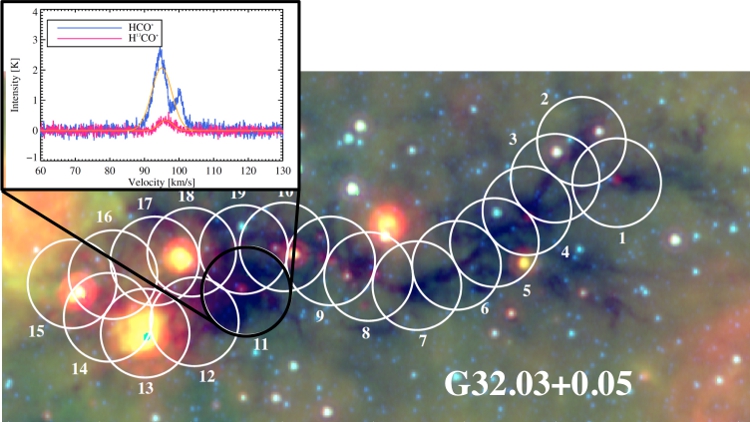| EPoS Contribution |
|
Accretion onto a Massive Star-Forming Filament
Cara Battersby CfA-SAO, Cambridge, US | |
| Emerging research demonstrates the ubiquity of massive-star-forming filaments in the Milky Way, yet their role in the star formation process remains unclear. Whether most of the matter that forms a massive star cluster is present prior to the formation of stars or if it accretes onto the forming cluster over time, potentially guided by filamentary structures, remains an open question. We investigate the role of continuing accretion onto a forming massive star cluster by presenting global line asymmetries toward a massive molecular filament (~70 pc long, 10^5 Msun). These line asymmetries are interpreted as a signature of large-scale radial collapse. Using line asymmetries observed with optically thick HCO+ (1-0) and optically thin H13CO+ (1-0) across a range of massive star forming regions in the filament, we estimate the global radial infall rate of the filament to range from a few 100 to a few 1000 Msun/Myr/pc^2. At its current infall rate the densest portions of the cloud will more than double their current mass within a Myr. The discovery of such a reservoir of infalling gas has important ramifications on the course of star formation in the cloud and on our overall understanding of star cluster formation. | |
 | |
| Caption: Large scale infall in the densest portion of the massive molecular filament, G32.03+0.05 (a 15 pc x 7 pc box shown here, total mass ~10,000 Msun). The dense filament is seen as an infrared dark cloud with varying degrees of massive star formation activity (Red: MIPSGAL 24 micron, Green/Blue: GLIMPSE 8.0/4.5 micron), from warm and active on the lower left to cold and quiescent on the upper right. Each circle shows the pointing center and beam size of an ARO 12m observation toward the filament. The zoom-in shows one example of the blue line asymmetry detected toward 17/19 positions in the cloud with optically thick HCO+ (1-0). We interpret these asymmetric line profiles as a signature of large-scale radial collapse onto the filament. At its current infall rate, the infalling gas will more than double the mass in the densest regions within a Myr, greatly increasing the reservoir of dense gas for cluster formation. | |
| Collaborators: P. Myers, CfA, US H. Kirk, McMaster, CA Y.L. Shirley, UofA, US |
Key publication
Suggested Sessions: Filaments |

